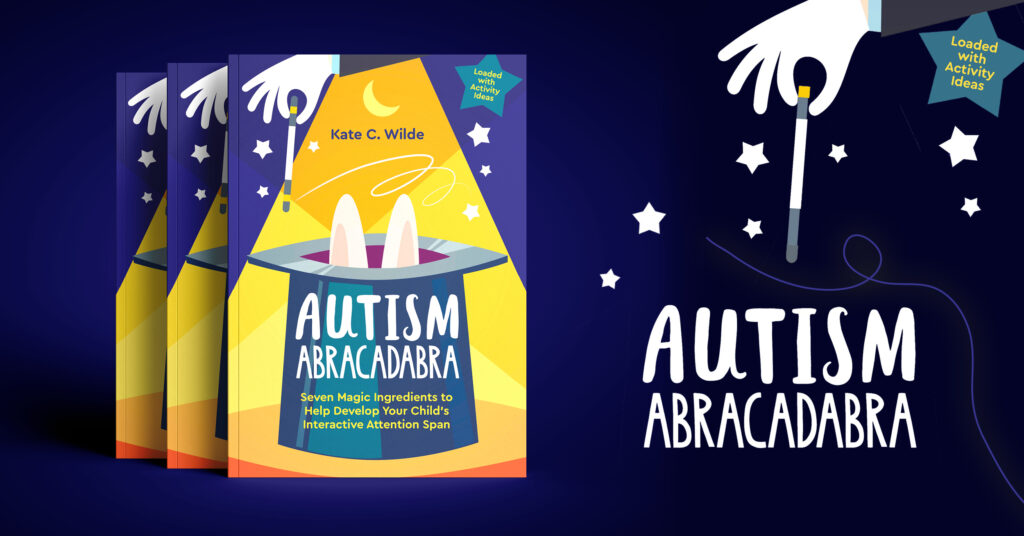Autism Abracadabra, the latest book by Kate Wilde, includes over 180 activities for families to do together. These activities help strengthen relationships and develop social skills. Below, Kate outlines some potential roadblocks and provides suggestions.

You try to engage them at the wrong time.
Our children and adults on the spectrum are giving us two types of signals throughout the day. A green-light signal tells us they are ready to play and connect with us. A red-light signal tells us they are overwhelmed and unable to connect and take in anything new at that moment. To be successful at playing games interactively, only initiate games and activities at a green light. The three main green the signals include:
- Your child is looking at you.
- They are responding to you, verbal or nonverbal requests.
- They are willingly engaging in some form of physical contact. This could be sitting on your lap, putting their arms round you, or holding your hand.
You are not using what they love.
Motivation is the key to everything. We work harder, learn quicker, and engage more when we feel really interested and enjoy what we are doing. When we are motivated, our brain secretes neurotransmitters, such as BDNF (brain-derived neurotrophic factor). These enhance the connectivity between our neurons, thus improving learning capability, attention spans and memory. Put your child or adult’s unique interests and motivations at the center of the game. This will heighten the possibility of them participating in the game. It will foster positive associations with social interaction. The more positive associations they have with social interaction, the more likely they will spontaneously start to seek it out. This will cause growth in this area of their development.
Autism Abracadabra has over 180 games and activity ideas. All are specifically designed using our children’s top motivations and special interests. From road signs to things that spin and dangle to household objects and more.
You are dictating, not playing.
We want our play to be a two-way street. It is a collaboration with our very special child or adult on the spectrum, not a dictatorship. Let your game be malleable. Embrace their creative way of exploring it or changing it. Allow it to blossom into a new version. It is not the structure of the game itself that matters, but the interaction between you both. Their growth lies in the interaction not the precise execution of any game or activity. When we let go, everything becomes possible.
By changing these three simple things, your child can better express their desire to play. They will also be able to show how much they already know and can do. Don’t forget to add in a dash of your most playful and silly self. There is nothing you can’t do together!